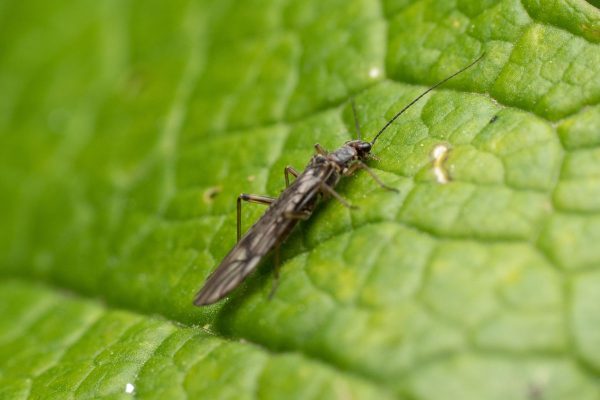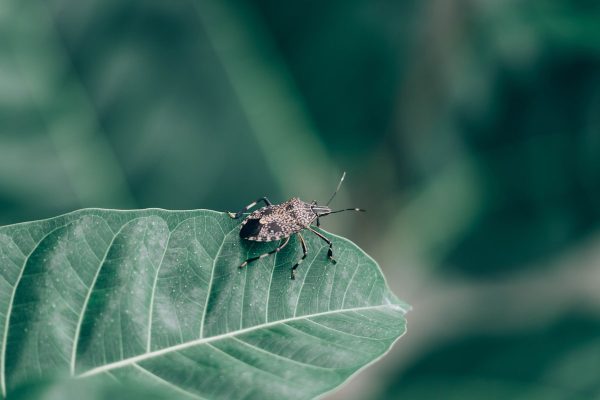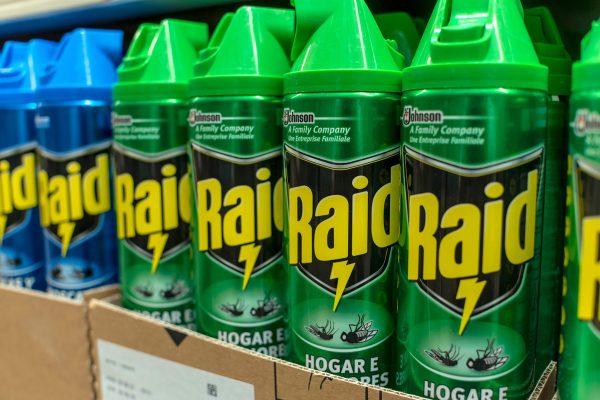Indian meal moths are one of the most common pests found at home. Your options for killing them are quite limited which might lead you to wonder if you could freeze them instead. That's what we asked the pest experts and here's their reply.
Yes, freezing will kill Indian meal moths. Keep your infected food items inside the freezer for 4 to 7 days to eliminate the larvae and adult moths. But you have to keep them in the freezer for up to a month to kill the pantry moth eggs.
Keep on reading to know more about how to kill Indian meal moths by freezing. We'll also tell you other ways to get rid of them in your pantry and how you can prevent them from coming back. This article will also inform you about the moth's lifespan and if they can eat through plastic. Let's get started!
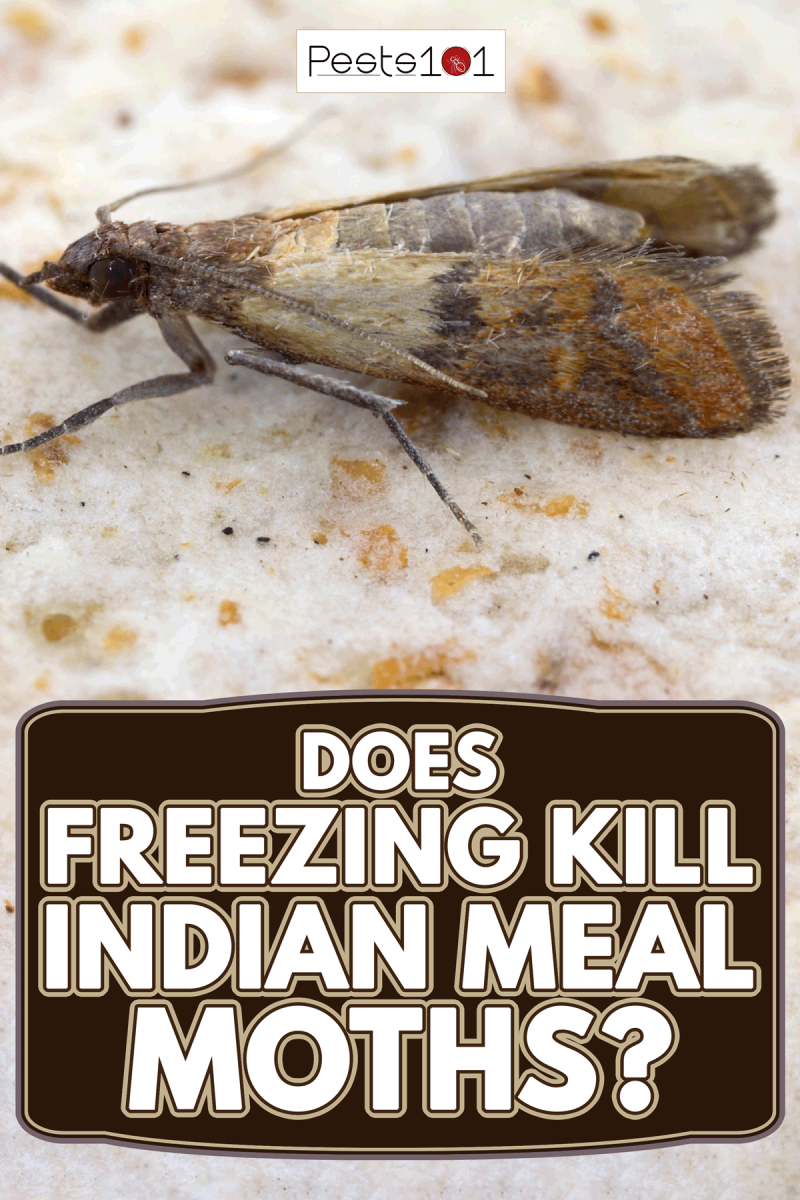
Does freezing kill pantry moths?
Indian meal moths are also known as pantry moths because that's where you're likely to see them thriving.
Just imagine, you wake up late and you just want to have cereal before you start your day but when you open your cereal container, you find out that little caterpillars are feasting on your planned breakfast. Disgusting, right?
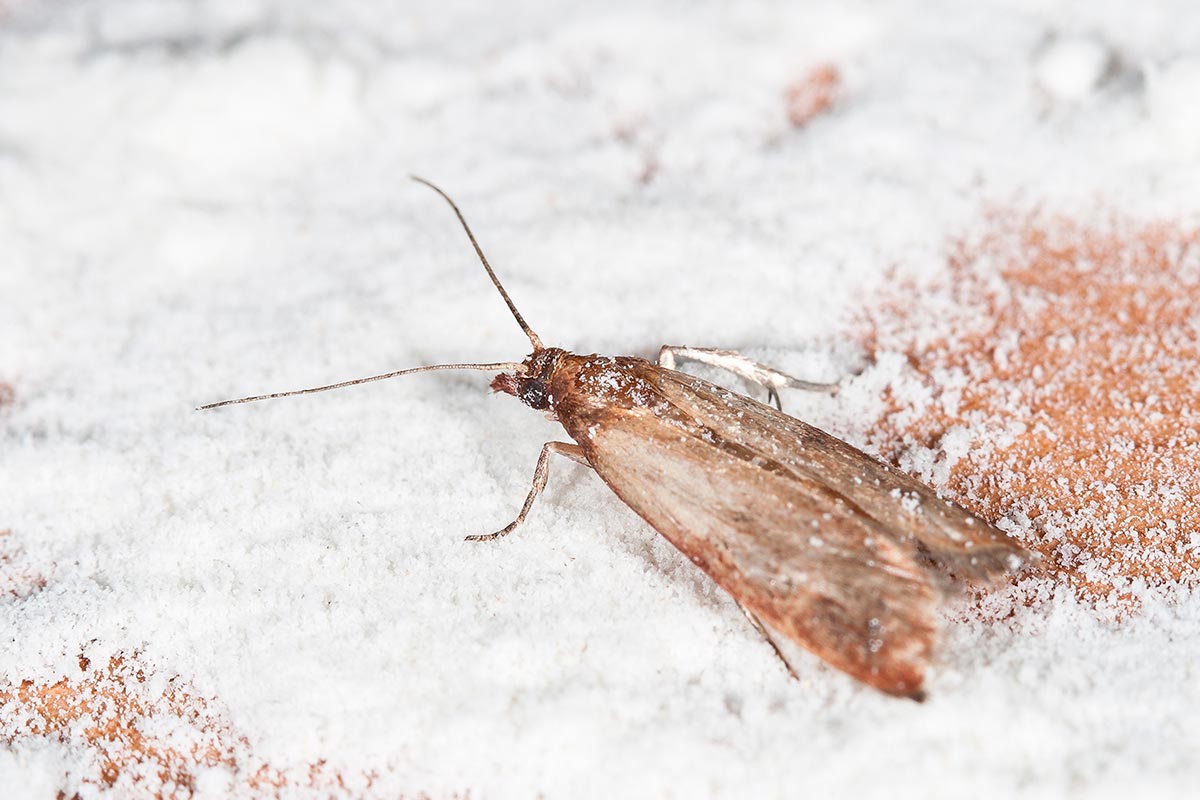
Indian meal moths are winged insects. They are about 3/4 of an inch in size with two-toned wings either in the shades of brown or gray.
They got their name not because they originated from India but because they have a penchant for Indian corn or cornmeal.
You might encounter these household pests in your food storage area. They particularly like grain products, cereals, dried fruits, and spices. They also make meals out of your dry dog or cat food.
The adult Indian meal moths don't do much damage to your food stock. At this stage of their life cycle, they don't feed anymore.
It is their caterpillars that viciously feed on your dry food products. This means that when you see these pantry moths flying around, be on the lookout for their caterpillars and also the frass (their poop!) that they leave behind.
But since they primarily target your pantry, you cannot apply insecticide to kill these pests. We're talking about food here so we don't want to contaminate them with chemicals from these pesticides.
If you're not comfortable with simply throwing them out in the trash bin for fear that they might come back, you have this option to freeze the food items infested with these pantry moths so that you can kill them.
Put them in freezer bags or airtight containers and place them in the freezer for four to seven days. This will kill pantry moths in the larvae and adult stages of development while it would take three to four weeks of freezing before the eggs die.
Find these freezer storage bags on Amazon.
This is linked to the fact that insects such as pantry moths don't do well in cold weather. They seek warmer shelter when winter comes. Simply put, they won't survive the freezing temperatures whether outside or inside the freezer.
Take note also that while freezing will kill Indian meal moths, their bodies would remain in the food product so you need to discard them properly.
What is the lifespan of a pantry moth?
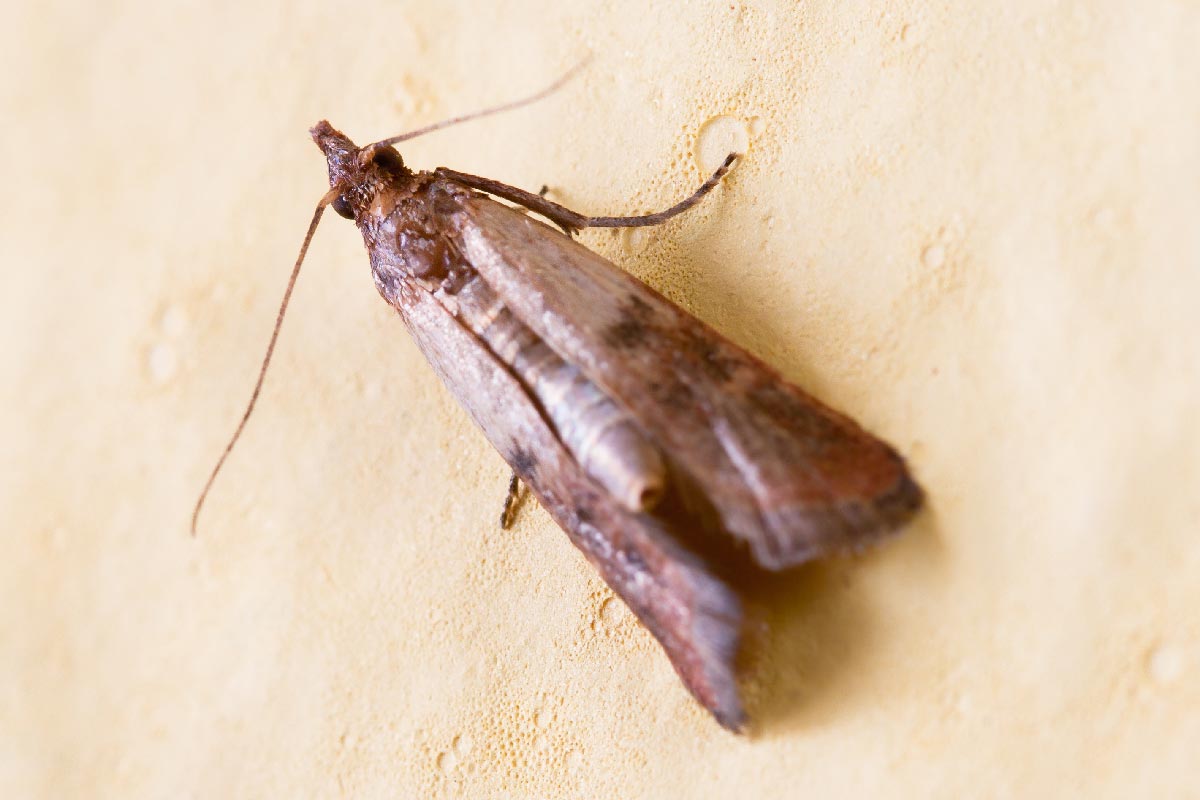
We've already mentioned the different stages of Indian meal moths or pantry moths. Like other insects, they start as eggs and then turn into larvae when the eggs hatch. They will enter into the pupal stage before they emerge into adult Indian meal moths.
The whole process takes an average of 4 to 7 weeks but it may even take up to 300 days. It would depend on the prevailing temperature and the availability of sufficient food sources. Pantry moths prefer warm temperatures throughout their life cycle.
The adult Indian meal moths only live for one to two weeks but their females can lay around 650 eggs before they die.
You will find their eggs on their preferred food products. This makes it convenient for their larvae to devour the food once they hatch from the eggs. They may also pupate on the food itself or within the crevices of your pantry or food cabinet.
Here's an approximation of the period for each stage:
- Eggs hatch in 2 to 7 days.
- Larvae fully develop in 14 to 40 days.
- The pupal stage lasts between 4 to 30 days.
- Adult Indian meal moths live for 7 to 14 days during which time they don't eat anymore but the females lay eggs so the life cycle continues.
How do I get rid of pantry moths?

You will know that you have a pantry moth infestation when you see these moths flying near your food stock. You might also notice some webbing outside and inside the food container.
Aside from seeing their larvae crawling over your dry food products, you might also notice them clumping together or having an unpleasant smell due to the sticky secretions from these tiny caterpillars. If you're really observant, you would see their frass or poop which are like gritty particles on the food surface.
Of course, those particular food items aren't fit for consumption anymore. But what should you do to get rid of your pantry pests for good?
Here's how to go about it:
- Empty your pantry or food cabinet whenever you noticed the presence of these Indian meal moths.
- Go through the items one by one and inspect them thoroughly for any sign of these pantry moths mentioned above.
- Discard the products that show signs of infestation. If there are holes in the packaging, throw them away. The main rule here is: When in doubt, throw it out. You can't take any chances when we're talking about food.
- Clean the food storage area. Use a vacuum bag in your vacuum cleaner then dispose of the bag properly after you're done cleaning.
- Prepare a vinegar-water solution (mix equal amounts of each) in a pail or basin. You can also add a few drops of peppermint oil if you have some.
- Wash the entire area, including the floor, with this solution to clean and disinfect it. The aroma of peppermint oil will act as a deterrent for these pantry pests.
- If there are some containers that you would still be using, soak them in hot soapy water, and brush them inside out before rinsing them with clean water.
Click this link to find this peppermint essential oil on Amazon.
That's it! But don't go restocking your pantry right away. Let your food storage area rest and you can also observe during this time if the Indian meal moths have truly been eliminated.
Can pantry moths eat through plastic bags?
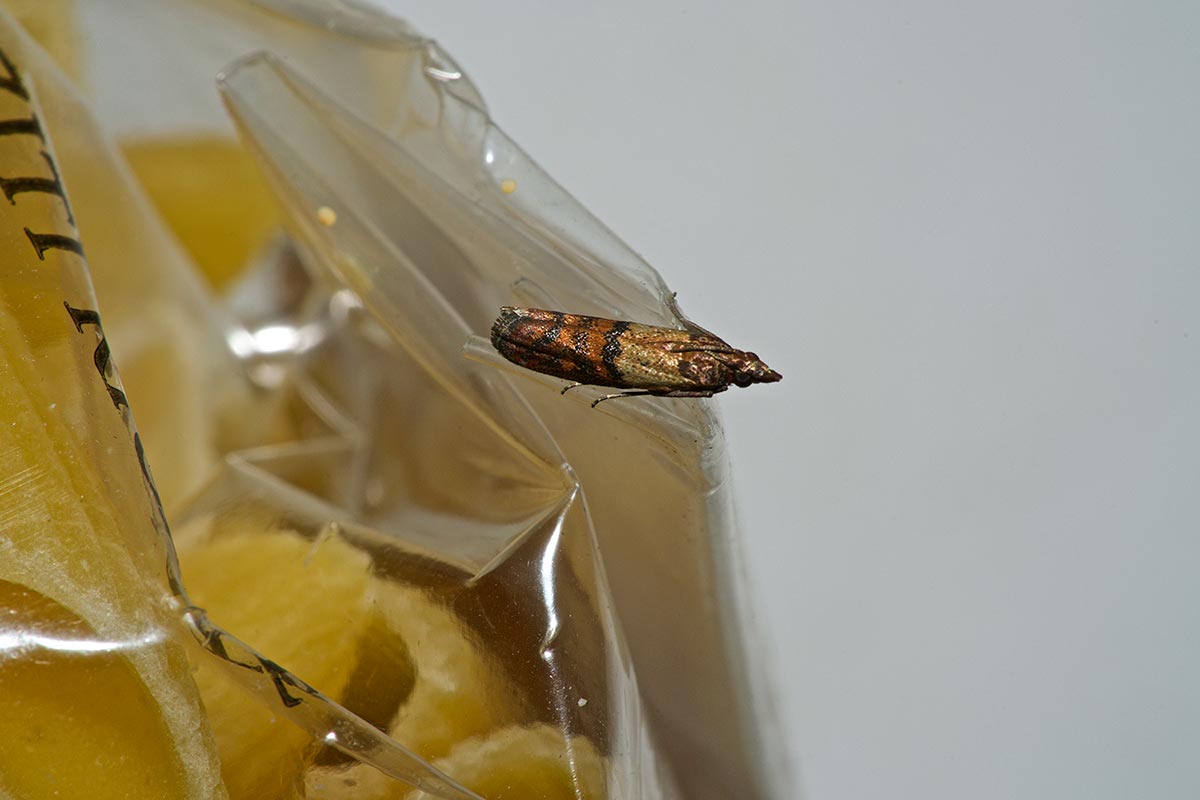
You might be wondering why there are pantry moth larvae in the food that you've stored in sealed plastic bags. It may come as a surprise to you but these pests are determined to devour your food that they can chew through the plastic!
You may even see them inside an unopened box of cereals because yes, they can eat through carton boxes too.
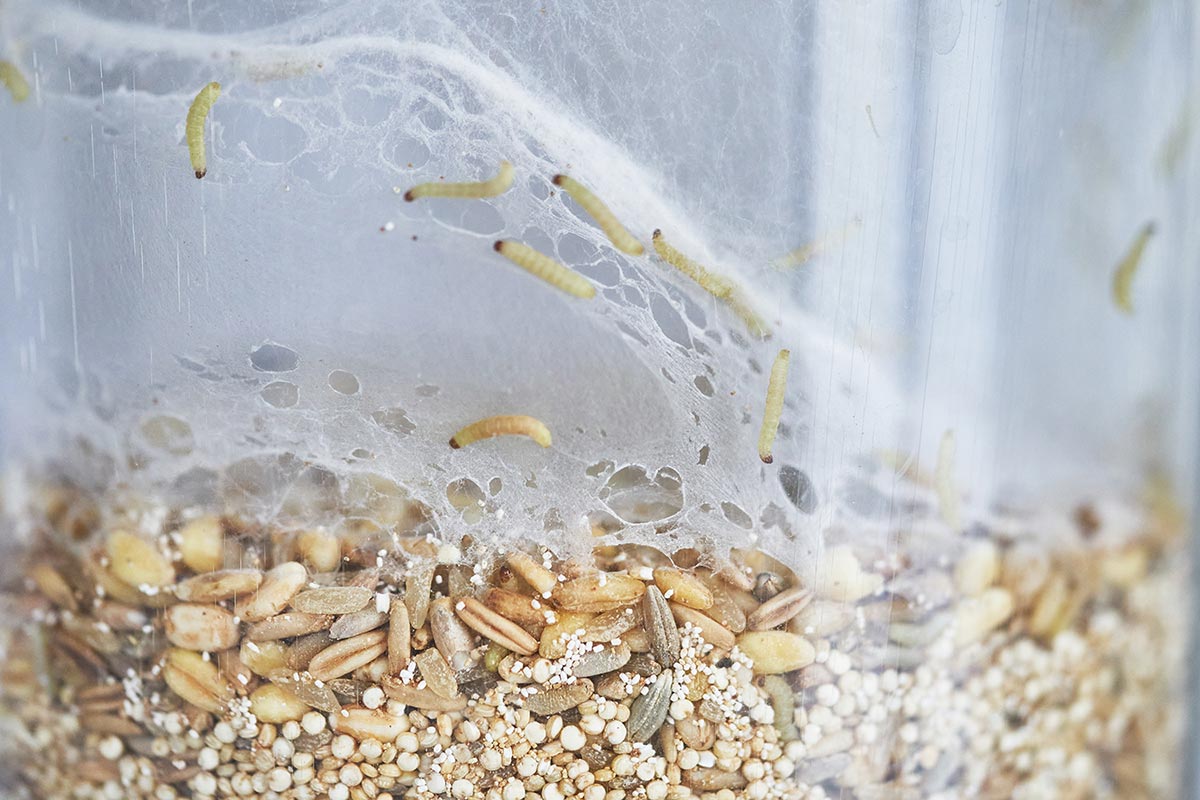
This highlights the importance of storing your food in the right container. Make sure you use airtight and durable food storage solutions. You can use thick plastic bins with lids, mason jars, glass, and metal containers.
Check out these glass food containers with lids on Amazon.
The key here is for you to be able to seal them tightly so that there's no chance for unwanted creatures to get inside.
It may also serve as a lesson for homemakers. We know the importance of having a stock of food, but at least don't let them stay in there for too long and make it a comfy place for the pests to live in.
Final Thoughts
Go ahead and freeze the food products infested with Indian meal moths. Make sure they are placed in airtight containers or sealed bags before leaving them in the freezer. The very cold temperature inside the freezer would chill these annoying pantry pests to their death.
To get more tips on how to get rid of other house pests, feel free to visit the following posts:




